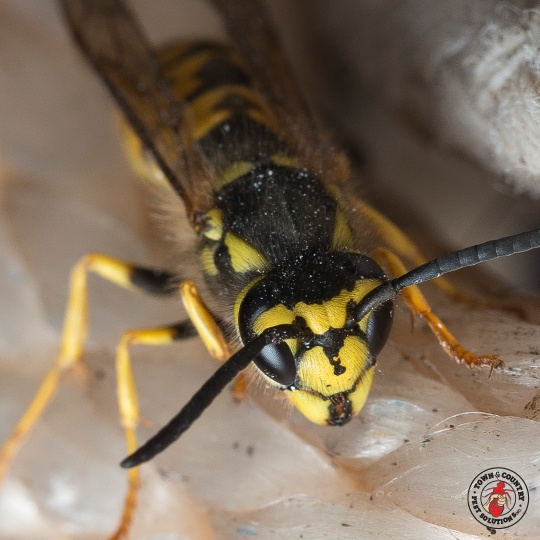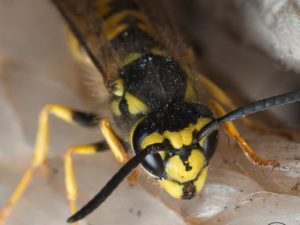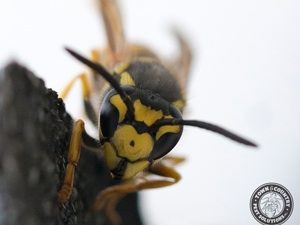
The winged and stinging insects commonly referred to as “yellow jackets” include many wasp species that are often mistaken for honey bees due their similar looking black and yellow striped body patterns. Many people are under the impression all yellow jackets found outdoors belong to one or a few species that will readily inflict painful and medically significant stings that can be deadly to some humans. One yellow jacket species, Dolichovespula maculata, is commonly known as the “bald-faced hornet,” despite being a yellow jacket species and not a hornet species, the latter of which belongs to a different genera of wasp species.
Although all yellow jacket species found in the US are very similar in terms of behavior and appearance, there actually exists more than a dozen yellow jacket species that can be found in the state of New York alone, all of which are known for inflicting stings that can trigger a severe allergic reaction in sensitive individuals, including anaphylaxis. More than 20 deaths result from wasp or bee attacks in the US each year, and most of these fatalities occur as a direct result of anaphylactic shock. In addition to their significance as medically harmful insect pests, yellow jackets also establish subterranean and aerial nests in residential yards where the winged pests can serve as a nuisance and a constant source of stress.
The aerial yellow jacket and the bald-faced hornet each establish aerial nests in residential areas, such as within shrubs, on tree branches, on the undersides of eaves, patios, garage rafters, window sills, attics, and wall voids. While the sight of a yellow jacket nest can be alarming, ground nesting yellow jacket species are responsible for more attacks on humans. This is because, unlike readily noticeable aerial nests, ground nests are rarely spotted, and therefore, are more apt to become inadvertently disturbed by humans. A significant proportion of yellow jacket attacks on humans are perpetrated by ground nesting species that become defensive in response to lawn mowers, weed eaters, and other loud and intrusive activities. Also, gardeners, landscapers, outdoor workers, and children are particularly apt to inadvertently disturb and trigger defensive swarming behavior in ground nesting wasp species.
Have you ever encountered a subterranean wasp nest on your property?











